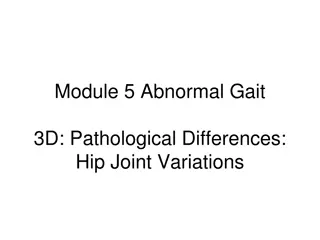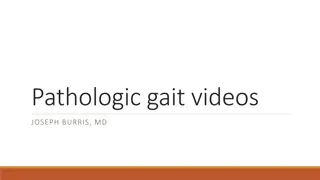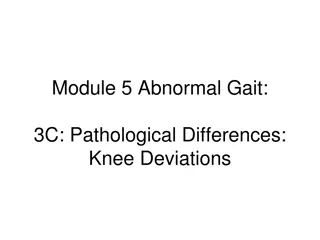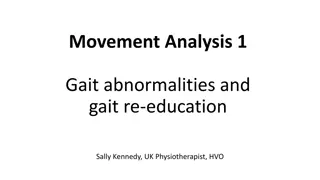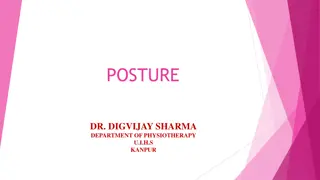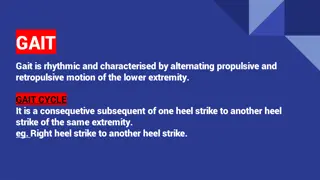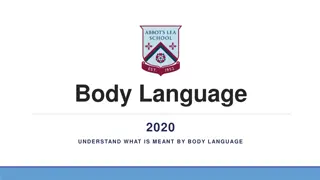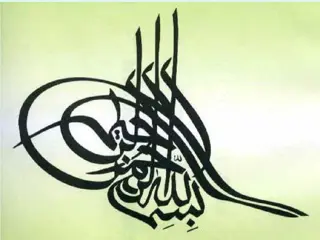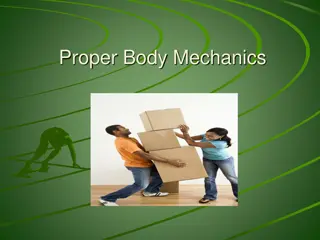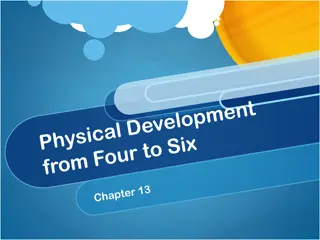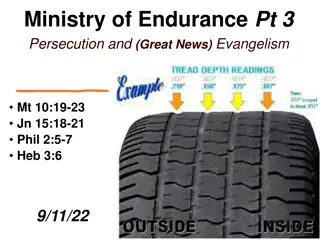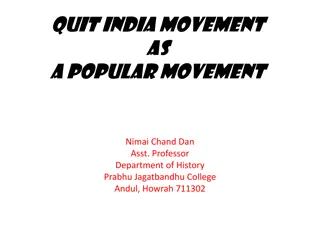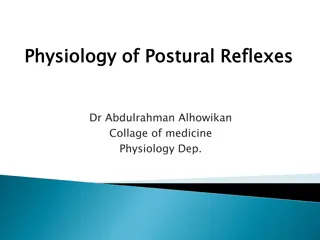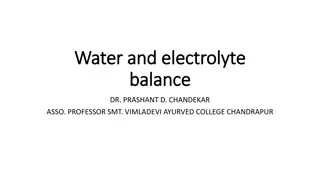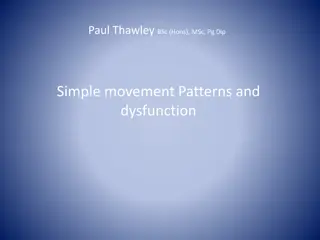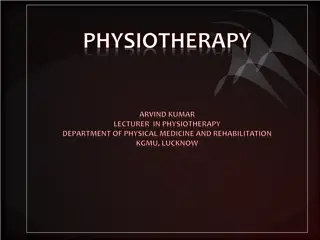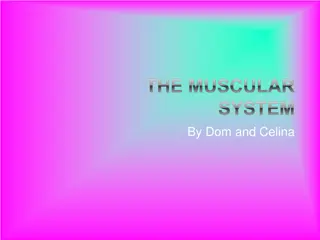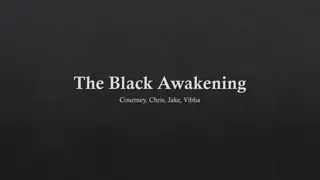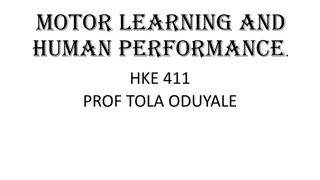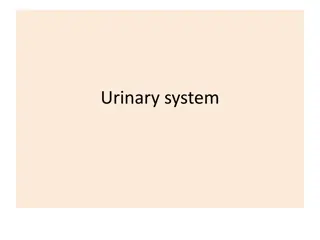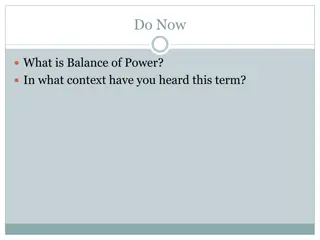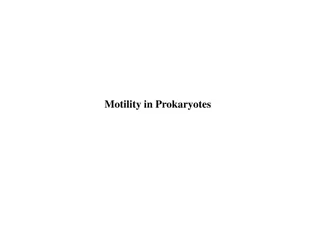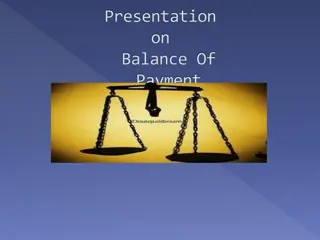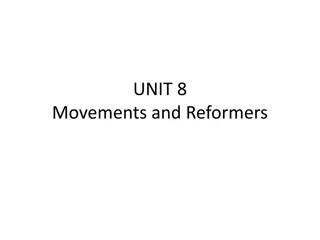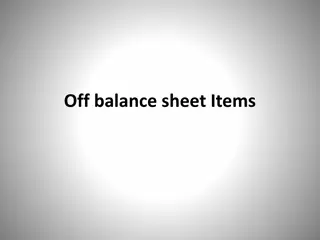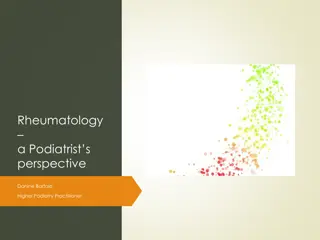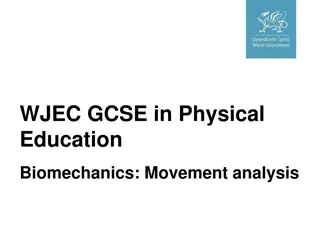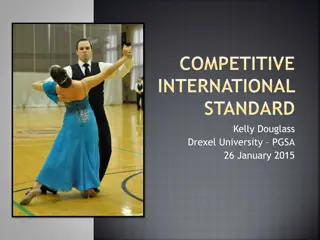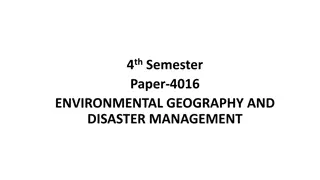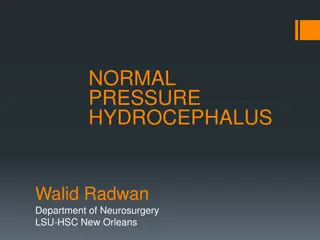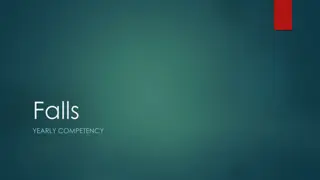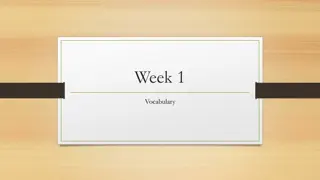Understanding Posture, Balance, and Gait Analysis in Human Movement
This resource delves into the static assessment of posture and balance, exploring the various inputs and control mechanisms involved in maintaining standing posture. It discusses the key factors influencing posture, such as visual, somatosensory, proprioceptive, and vestibular systems, along with muscle synergies and the kinetics and kinematics of posture. The content also covers the differences between normal and pathological gait, providing insights into postural control and standing balance. Additionally, it examines the goals of standing posture and how the body monitors balance to prevent falls and conserve energy. The resource is supported by references to valuable publications in the field.
Download Presentation

Please find below an Image/Link to download the presentation.
The content on the website is provided AS IS for your information and personal use only. It may not be sold, licensed, or shared on other websites without obtaining consent from the author. Download presentation by click this link. If you encounter any issues during the download, it is possible that the publisher has removed the file from their server.
E N D
Presentation Transcript
Module 4: Normal Gait 1B: Static Assessment: Posture & Balance
References Winter, DA. (1995). Human balance and posture control during standing and walking. Gait & Posture, December, No 3, 193 to 214. (pdf available on ANGEL) Perry, J and Burnfield, J. (2010). Gait Analysis: Normal and Pathological Function 2ndedition. Chs 1 to 3. Levangie, P. and Norkin, C. (2011). Joint Structure & Function: A Comprehensive Analysis 5thEdition. Ch. 1 (pg 4 to 10) and 13. Recommended: Magee, DJ. (2008). Orthopedic Physical Assessment, 5th edition. Ch 15. (pdf available on ANGEL) Other referenced Journal Publications.
Agenda A. Standing Posture Inputs 1. Visual 2. Somatosensory 3. Proprioceptive 4. Vestibular C. Postural Control 1. Muscle Synergies 2. Kinetics & Kinematics of Posture 3. Optimal Sagittal Plane Posture B. Quiet Standing Variables of Interest 1. Kinematics 2. Base of Support (BoS) 3. Kinetics a. Center of Mass (CoM) b. Line of Gravity (LoG) c. Center of Gravity (CoG) d. Ground Reaction Force (GRF) e. Center of Pressure (CoP) D. NHL vs. Pathological
Posture and Standing Static vs Quasi-static Static Quiet Standing Swaying
Posture and Standing, continued Static Quiet Standing Postural Sway Motion of body during quiet stance Sway Envelope (when standing with feet approximately 4 inches apart) 12 in Sagittal Plane 16 in Frontal Plane Perturbed Standing
Standing Posture Goals So we don t fall down Decrease energy consumption How does the body monitor standing balance?
A. Standing Posture Inputs 1. Visual System
A. Standing Posture Inputs, continued 2. Somatosensory System Processes information about the somatic sensation Pain, temperature, touch, proprioception
A. Standing Posture Inputs, 2 3. Proprioceptive Stimuli Internal forces that are generated by the position or movement of a body part Static forces on the joints, muscles and tendons, which maintain limb position against the force of gravity, indicate the position of a limb
A. Standing Posture Inputs, 3 3. Proprioceptive Stimuli (continued) Movement indicated by dynamic changes in the forces applied to muscles, tendons and joints Proprioception is critical for maintaining posture and balance Somatosensory proprioceptive cues are combined with vestibular and visual cues to control motor responses to changes in body/head position Assessment IMPORTANT for proper patient care! Source of Information: Neuroscience Online, Ch 10
A. Standing Posture Inputs, 4 4. Vestibular System Inner ear membrane Three semicircular ducts (horizontal, anterior and posterior) Two Otolith organs (Saccule and Utricle) Cochlea (mainly auditory) Monitors orientation of the body with respect to gravity During dynamics motion adjust orientation with respect to self generated movements, and forces exerted from the outside world Source of Information: Neuroscience Online, Ch 10
A. Standing Posture Inputs, 5 4. Vestibular System, continued 3 Semicircular Ducts Oriented 90 degrees to each other Act like accelerometers Source of Information: Neuroscience Online, Ch 10
A. Standing Posture Inputs, 6 4. Vestibular System, continued Otolithic organs (Saccule & Utricle) Lie against the walls of the inner ear between the semicircular ducts and the cochlea Receptors (cilia) topped by small, calcium carbonate crystals called otoconia As head tilts, cilia move & send signals to brain stem though the VIIIthnerve Source of Information: Neuroscience Online, Ch 10
B. Variables of Interest Quiet Standing 1. Kinematics What specific joints / body segments? 2. Base of Support 3. Kinetics What specific variables?
B. Variables of Interest Quiet Standing, 2 1. Kinematics = Body Alignment Sagittal and Coronal Plane Ankle Angles Knee Angles Hip Angles Pelvis Angles Trunk Angles
B. Variables of Interest Quiet Standing, 3 2. Base of Support (BoS) Size Shape Why would BoS be important to know?
B. Variables of Interest Quiet Standing, 4 3. Kinetics Location and velocity of Center of Pressure!
3. Kinetic Variables of Interest a. Center of Mass (CoM) b. Line of Gravity (LoG) c. Center of Gravity (CoG) d. Ground Reaction Force (GRF) e. Center of Pressure (CoP)
a. Center of Mass (CoM) Single point equivalent of the total body mass in the global coordinate system and is the weighted average of the center of mass of each body segment in 3D space
b. Line of Gravity (LoG) Represents the Force of gravity acting on a mass or object Length of line can be drawn to scale It s a plumb line attached to CoM of an object which gives an accurate representation of the point of application, direction, and orientation of the force of gravity on an object (not the magnitude) What are the Foot/Ankle, Knee, and Hip doing to maintain this posture?
c. Center of Gravity (CoG) Vertical Projection on the ground of the CoM is called the Center of Gravity (Winter, 1995)
d. Ground Reaction Force (GRF) Newton s 3rd Law: every action has an equal and opposite reaction Composite of three components Vertical Fore-Aft (anterior/posterior) Force Medial-Lateral Force A single 3D Vector
d. Ground Reaction Force, 2 Newton s 3rd Law: every action has an equal and opposite reaction A single 3D Vector
e. Center of Pressure (CoP) The point location on the ground of the Ground Reaction Force (GRF) vector Represents weighted averages of all the pressures of the surface area in contact with the ground 1 foot on ground, CoP lies under foot 2 feet on ground, CoP lies somewhere between the 2 feet Location of CoP under feet are direct reflections of the neuromuscular control Explain?
e. Center of Pressure (CoP), continued - Data Stability maintained by keeping the body s CoM inside the BoS
e. Center of Pressure (CoP), continued - Quiet Stance Majority of Standing studies collect Kinetic data GRF CoG CoP CoM Relationship of CoM to CoP? CoM movement greater or less than CoP?
Static Posture Quiet standing balance can occur with little or no muscle activation when the body s center of gravity (weight line) is aligned through the joint axes of the lower limbs (Perry, 1992) Impossible because of body composition and structure, but we can get close!
Static Posture, continued External Gravitational forces are relatively small Weight of body Little to no dynamic forces Internal forces generated to balance the external forces Small amount of muscle activity Passive capsular tension Ligamentous tension
Volunteer Quiet Standing Posture Crouch stance Bent over at hip without knee bend Other conditions??
C. Postural Control Postural control (statically or dynamically) is a person s ability to maintain stability of body and body segments in response to forces threatening to disturb equilibrium.
C. Postural Control, 2 Primary control of balance is a learned function of the Central Nervous System (Horak et al., 1997) Sensors System What? Actuation What? Reactive Control Actions in response to external forces Proactive Control Anticipatory response to internally generated forces, i.e. raising arms or bending over to pick up something
C. Postural Control, 3 Static Posture Muscular control Large amount or small amount?
C. Postural Control 1. Muscle Synergies Synergy - The interaction of elements that when combined produce a total effect that is greater than the sum of the individual elements. Muscle Synergy - Groups of muscles that contract together to accomplish the same body movement.
1. Muscle Synergies in Balance Ankle Strategy during quiet stance and small perturbations Ankle plantar/dorsiflexors control Anterior/Posterior motion (Winter, 1995)
1. Muscle Synergies in Balance Hip Strategy during quiet stance or small perturbations Hip abductors/adductors control Medial/Lateral motion (Winter, 1995)
C. Postural Control - 2. Kinetics & Kinematics of Posture External Forces Gravity Inertia Ground Reaction Forces Internal Forces Muscle activity Passive tension in ligaments, tendons, joint capsules, and other soft tissues In static posture: Sum (External Forces) + Sum (Internal Forces) = ?
2. Kinetics & Kinematics of Posture, continued Effect of external forces on body segments dependent on location/direction of GRF GRF passes through a joint No external gravitation moment created GRF passes a distance away from a joint Internal moment created to counterbalance Muscular Ligamentous Bone on Bone Direction of moment?
2. Kinetics & Kinematics of Posture, continued Ankle Joint Weight line passes anterior to ankle joint center of fixed foot External gravity moment tends to rotate tibia anterior Ankle experiences dorsiflexion Therefore, moment of force (external moment) is dorsiflexion Internal moment is plantarflexion
2. Kinetics & Kinematics of Posture, continued Knee Joint LoG passes anterior to Knee joint center External gravity moment tends to rotate Femur anterior External Knee extension moment Internal moment is knee flexion moment to create equilibrium
3. Optimal Sagittal Plane Posture Ankle Position = Neutral So, LoG is anterior (2 to 4 cm) to lateral malleoli Creates an External Moment = Dorsiflexion Moment Countered by an Internal Moment = Plantarflexor Moment Requires Soleus and Gastrocnemius activity
3. Optimal Sagittal Plane Posture, 2 Knee Position = Full Extension So, LoG anterior to midline of knee & posterior to Patella Creates an External Moment = Extension Moment Countered by Internal Moment = Flexor Moment Requires passive tension in ligaments Limited data indicating EMG of Gastrocnemius and Hamstrings
3. Optimal Sagittal Plane Posture, 3 Hip and Pelvis Hip Position = Neutral Position of Pelvis = Level So, LoG passes slightly posterior to hip joint through greater trochanter Creates an External Moment= Hip Extension Moment Countered by Internal Moment = Hip Flexion Moment Requires hip flexor activity
Describe the Static Posture Joint Angles Ankle = neutral Knee = neutral Hip = slightly flexed Joint Moments Ankle = Dorsiflexion Knee = Extension Hip = Flexion
Describe the Static Posture, 2 Joint Angles Ankle = neutral Knee = neutral Hip = flexed Joint Moments Ankle = Dorsiflexion Knee = Extension Hip = Flexion
Describe the Static Posture, 3 Joint Angles Ankle = PF Knee = flexed Hip = flexed Joint Moments Ankle = Plantarflexion Knee = Flexion Hip = Flexion
Describe the Static Posture, 4 Joint Angles Ankle = DF Knee = flexed Hip = Extended Joint Moments Ankle = DF Knee = Extension Hip = Flexion
D. NHL vs. Pathological NHL Synergistic Cyclic Synchronized Pathological Muscle action either excessive, inadequate, or abnormally timed Soft tissue tightness
Dynamic Gait Get up & walk!!! Observe!! Kinematics Body segment positions Use your knowledge of muscle activation timing and amplitude Continue to study gait Kinematics, Kinetics, Muscle activation patterns All planes!!!


